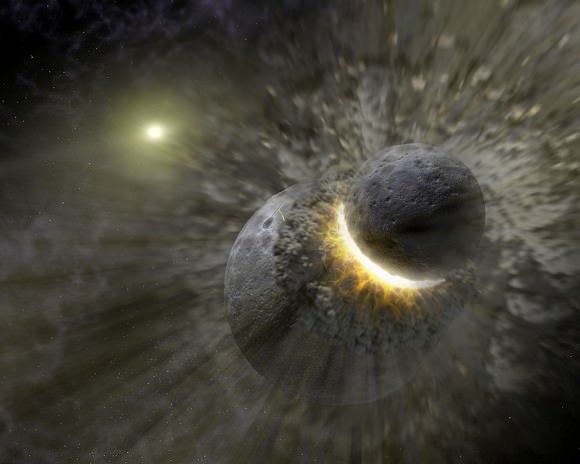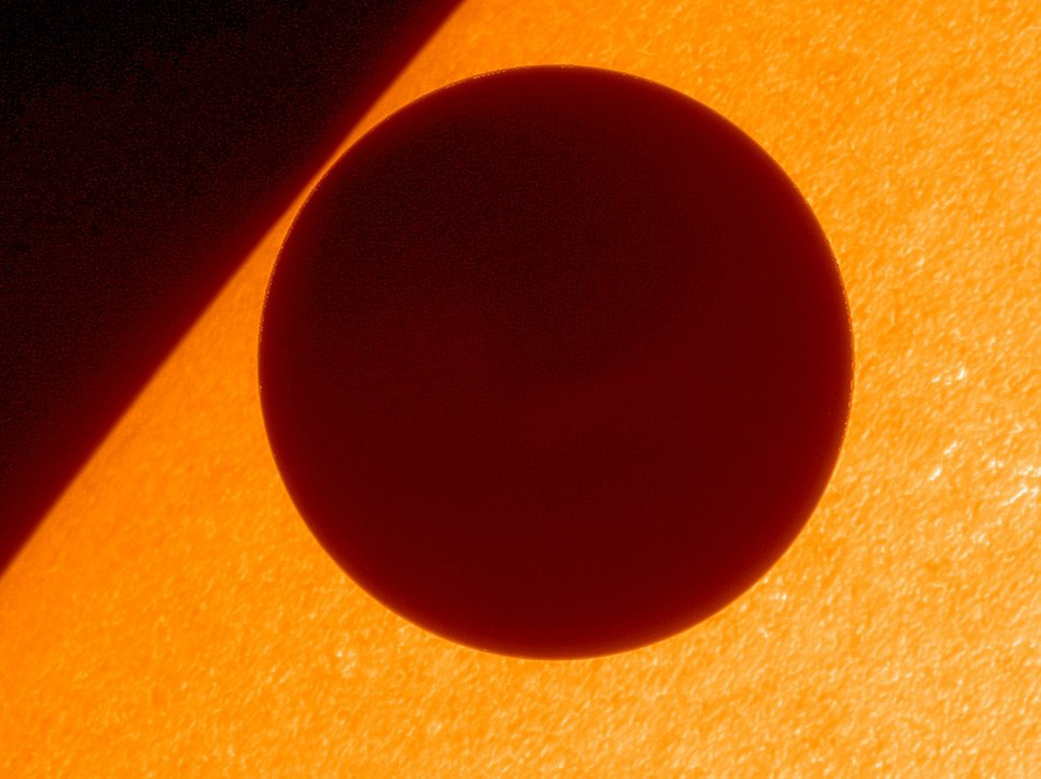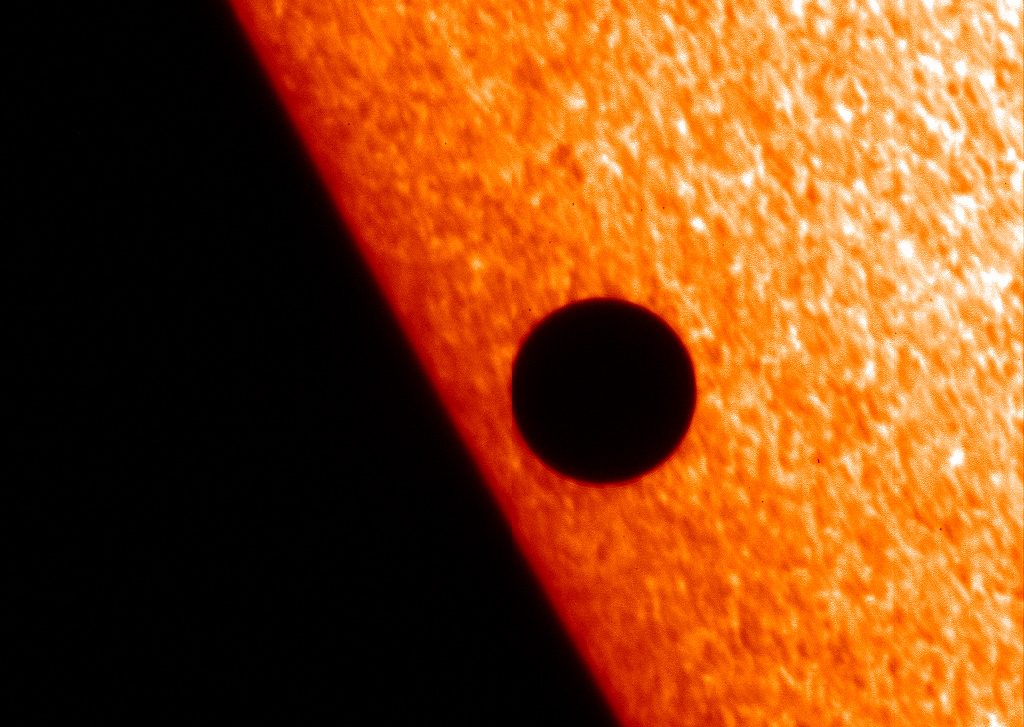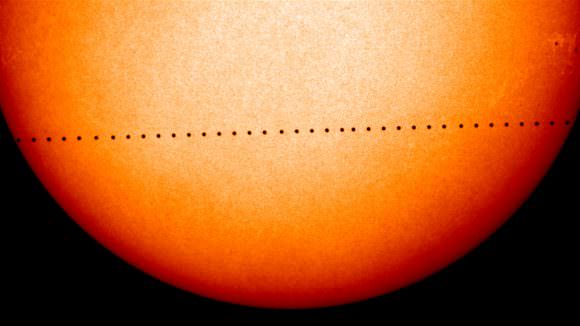Earth and Venus are often called “sister planets” because they share some key characteristics. Like Earth, Venus is a terrestrial planet (i.e. composed of silicate minerals and metals) and orbits within our Sun’s habitable zone. But of course, they are also some major differences between them, like the fact that Venus’ is atmosphere is extremely dense and the hottest in the Solar System.
This is particularly interesting when you consider that Venus is not the closest planet to our Sun (that would be Mercury). In fact, its distance from the Sun is just over 70% the distance between Earth and the Sun. And due to its low eccentricity, there is very little variation in its distance during the course of its orbital period.
Perihelion and Aphelion:
While all planets follow an elliptical orbit, Venus’s orbit is the least eccentric of any of the Solar Planets. In fact, with an eccentricity of just 0.006772 , its orbit is the closest to being circular of any of the planets. It’s average distance (semi-major axis) from the Sun is 108,208,000 km (67,237,334 mi), and ranges from 107,477,000 km (66,783,112 mi) at perihelion to 108,939,000 km (67,691,556 mi) at aphelion.

To put it another way, Venus orbits the Sun at an average distance of 0.723 AU, which ranges from 0.718 AU at its closest to 0.728 AU at its farthest. Compare this to Earth’s eccentricity of 0.0167, which means that it orbits the Sun at an average distance of 1 AU, and that this distance ranges between 0.983 and 1.0167 AUs during its orbital period.
To express that in precise terms, the Earth orbits the Sun at an average distance of 149,598,023 km (92,955,902 mi), and varies between a distance of 147,095,000 km (91,401,000 mi) at perihelion to a distance of 152,100,000 km (94,500,000 mi) at aphelion.
Mars, by contrast, orbits the Sun at an average distance of 227,939,200 km (141,634,852 mi), or 1.52 AU. But due to its high eccentricity of 0.0934, it ranges from a distance of 206,700,000 km (128,437,425 mi) at perihelion to 249,200,000 km (154,845,700 mi) at aphelion – or between 1.38 to 1.666 AUs.
Mercury, meanwhile, has the highest eccentricity of any planet in the Solar System – a surprising 0.2056. While it’s average distance from the Sun is 57,909,050 km (35,983,015 mi), or 0.387 AU, it ranges from 46,001,200 km (28,583,820 mi) at perihelion to 69,816,900 km (43,382,210 mi) at aphelion – or 0.3075 to 0.4667 AUs.

Hence, you might say Venus is something of an oddity compared to its fellow-terrestrial planets. Whereas they all orbit our Sun with a certain degree of eccentricity (from fair to extreme), Venus is the closest to orbiting in a circular pattern. And with an orbital velocity of 35.02 km/s (126,072 km/h; 78,337.5 mph), Venus takes 224.7 Earth days to complete a single orbit around the Sun.
Retrograde Motion:
Another oddity of Venus is the peculiar nature of its rotation. Whereas most objects in our Solar System have a rotation that is in the same direction as their orbit around the Sun, Venus’ rotation is retrograde to its orbit. In other words, if you could view the Solar System from above the Sun’s northern polar region, all of the planets would appear to be orbiting it in a counter-clockwise direction.
They would also appear to be rotating on their axis in the same counter-clockwise direction. But Venus would appear to be slowly rotating in a clockwise direction, taking about 243 days to complete a single rotation. This is not only the slowest rotation period of any planet, it also means that a sidereal day on Venus lasts longer than a Venusian year.
A popular theory states that this is due to two major impacts taking place between Venus and a series protoplanets in the distant past. Much like the impact that is believed to have created the Moon (between Earth and Theia), the first of these impact would have created a moon in orbit of Venus, while a second (10 million years later) would reverseed its rotation and caused the moon to de-orbit.

Every planet in our Solar System has is shares of quirks, and Venus is no exception. She’s “Earth’s Sister”, and she’s prone to extreme temperatures that do not vary. And her orbit is the most stable of any planet, also with very little variation. You might say Venus is the extremely hot-tempered sibling of Earth, and very straight-laced to boot!
We have written many articles about the orbits of the planets here at Universe Today. Here’s How Far are the Planets from the Sun?, How Far is Mercury from the Sun?, How Far is the Earth from the Sun?, How Far is the Moon from the Sun?, How Far is the Asteroid Belt from the Sun?, How Far is Jupiter from the Sun?, How Far is Saturn from the Sun?, How Far is Uranus from the Sun?, How Far is Neptune from the Sun?, and How Far is Pluto from the Sun?
If you’d like more information on Venus, check out Hubblesite’s News Releases about Venus, and here’s a link to NASA’s Solar System Exploration Guide on Venus.
We’ve also recorded an entire episode of Astronomy Cast all about Venus. Listen here, Episode 50: Venus.
Sources:




